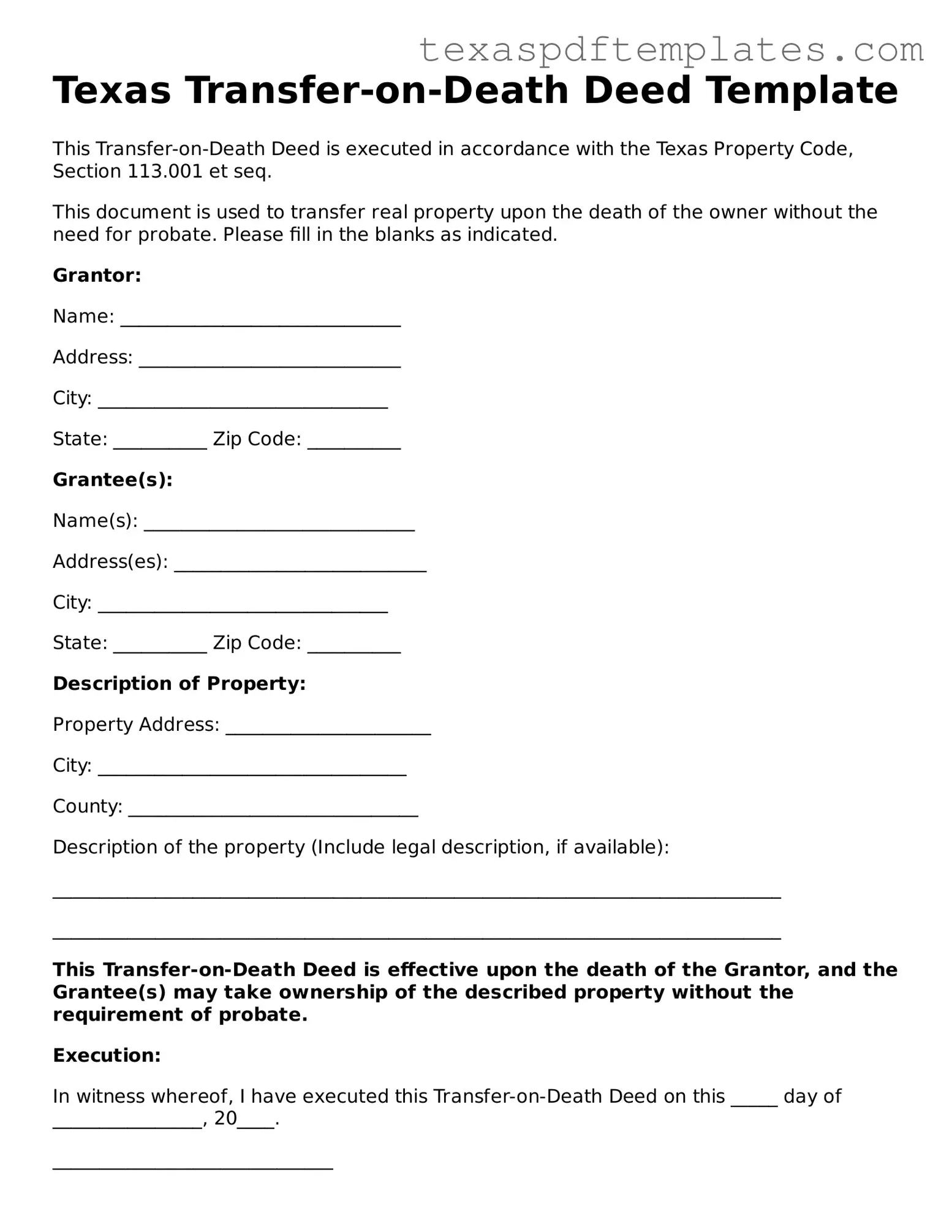Texas Transfer-on-Death Deed Template
This Transfer-on-Death Deed is executed in accordance with the Texas Property Code, Section 113.001 et seq.
This document is used to transfer real property upon the death of the owner without the need for probate. Please fill in the blanks as indicated.
Grantor:
Name: ______________________________
Address: ____________________________
City: _______________________________
State: __________ Zip Code: __________
Grantee(s):
Name(s): _____________________________
Address(es): ___________________________
City: _______________________________
State: __________ Zip Code: __________
Description of Property:
Property Address: ______________________
City: _________________________________
County: _______________________________
Description of the property (Include legal description, if available):
______________________________________________________________________________
______________________________________________________________________________
This Transfer-on-Death Deed is effective upon the death of the Grantor, and the Grantee(s) may take ownership of the described property without the requirement of probate.
Execution:
In witness whereof, I have executed this Transfer-on-Death Deed on this _____ day of ________________, 20____.
______________________________
Signature of Grantor
Witnesses:
- Name: _________________________ Signature: ________________________ Date: _______________
- Name: _________________________ Signature: ________________________ Date: _______________
Notary Public:
State of Texas
County of ______________________
Subscribed and sworn to before me this _____ day of ________________, 20____.
______________________________
Notary Public’s Signature
______________________________
Notary Public’s Name
My commission expires: ____________
